Niche Business Ideas for 2025: 10 Profitable Options

If you can dream it, you can do it.
Seriously, people are out there scraping gum from the bottom of restaurant tables and monetizing that service.

Maybe you’re tired of your 9-5. Maybe you want to bring in some extra cashola from a side hustle. Or maybe you’re really passionate about a super-specific small business idea but don’t know where to start.
Will my idea work?
Am I picking the right niche?
Is my mom going to be my only customer?
Relax. The internet is huge, and there’s space for all kinds of ventures — especially if you start a small business that solves an actual problem.
Below are 10 fast-growing ideas for 2025, plus tips on how to turn them into real, successful businesses. Some may click with you, others may not. That’s cool. The goal is to spark ideas and help you grab what fits you best.
What Makes a Great Niche Business Idea?
A niche business focuses on a specific slice of a larger market. Think of it as a small-but-mighty corner where you serve a particular group of customers or solve a unique problem.
A profitable niche is a specialized area that not only sparks interest but also drives sales. It’s underserved, meaning competitors aren’t swarming, or it’s brand new (or at least new-ish), so you have room to grow.
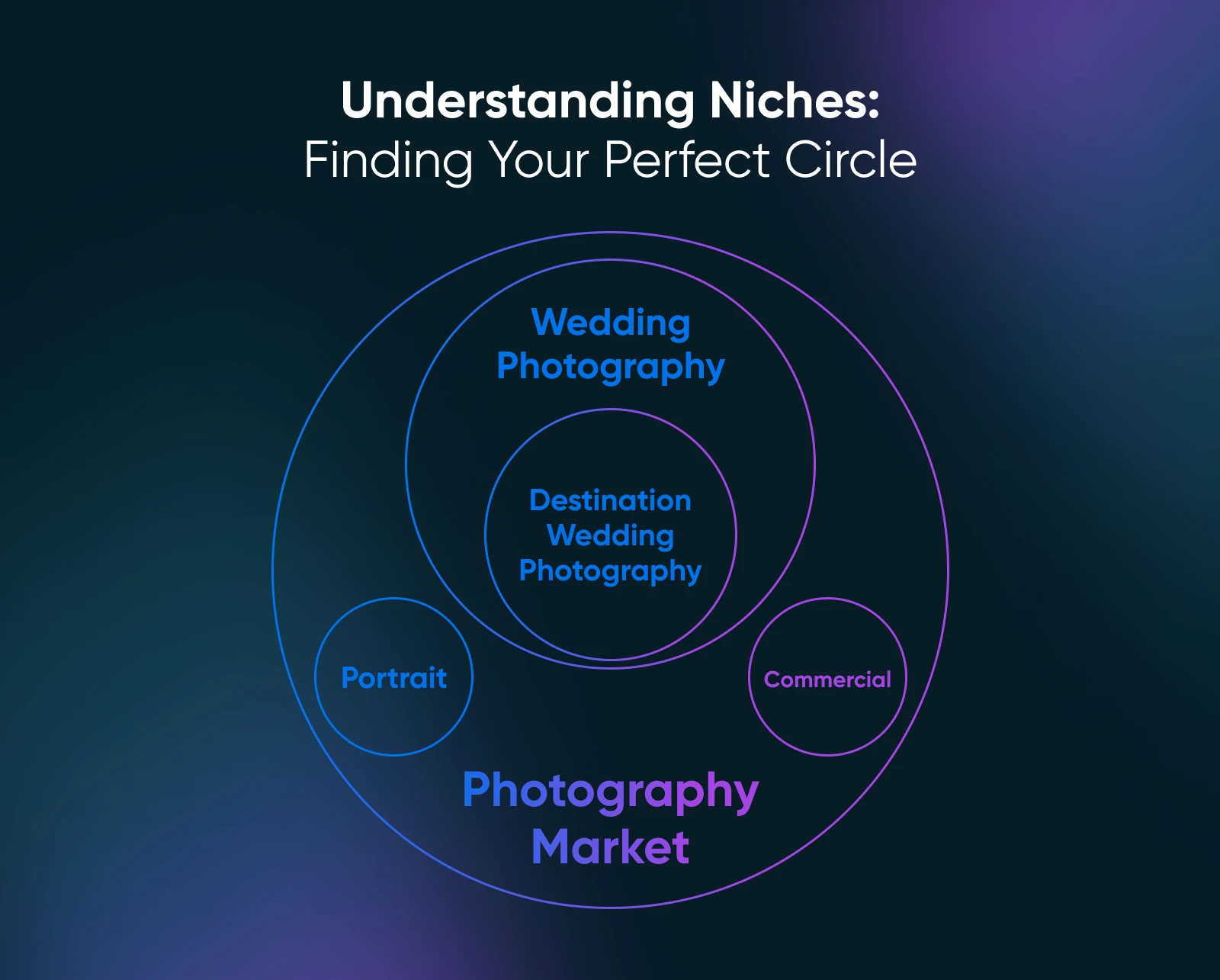
And the right business for you will depend on this evaluation matrix.
Niche Idea Evaluation Matrix
Here’s how to use our small business idea matrix:
Pro Tip: You can make a copy of our free Niche Idea Scorecard template, or create your own using the outline here.
Read the guiding questions below and assign a score from 1 to 5, where:
- 1 = Very Low / Very Difficult / No Alignment
- 2 = Low / Difficult / Low Alignment
- 3 = Medium / Possible / Moderate Alignment
- 4 = High / Achievable / Good Alignment
- 5 = Very High / Easy / Strong Alignment
Here are the guiding questions you need to score each column:
- Differentiation: How easily can I stand out from others?
- Demand: Do enough people want this product or service?
- Profit potential: Can I make decent money doing this?
- Personal alignment: Will I stay interested in this for a long time?
Okay, the matrix helps rank your ideas. But don’t build anything big yet. Next, you have to test to see if your online business idea holds water in the real world within your target market. Luckily, we have just the guide to validate your side hustle ideas.
Let’s explore 10 trending niches you can plug into the matrix right now.
10 High-Demand Niche Business Ideas for 2025
Your entrepreneurship dreams take flight here.
Remember to use these (or your own ideas!) in the evaluation matrix.
1. Eco-Friendly and Sustainable Products
You’ve seen the headlines, right? Rising sea levels, plastic everywhere. Consumers are noticing, and they’re seeking ways to spend money without feeling like villains.
Harvard Business Review’s research suggests we’re near a tipping point where sustainability is becoming a basic requirement to get customers.
Why? Because it builds trust, especially with younger generations.
And those younger folks are about to hold most of the spending power.
People want greener options, creating a huge opportunity if you can offer products that actually help them reduce their environmental impact.
What You Can Do
- Sell reusable versions of everyday things: Think stylish coffee cups people want to carry, beeswax food wraps instead of plastic cling film, or durable mesh produce bags.
- Create refillable products: Offer concentrated cleaning supplies or personal care items (like shampoo bars) where customers buy refills, cutting down on packaging waste.
- Curate zero-waste starter kits: Bundle essential reusables (like a water bottle, utensils, and a container) to help beginners get started on reducing waste easily.
- Upcycle old materials into cool new products: Get creative turning old jeans into bags, advertising banners into wallets, or reclaimed wood into unique home decor.
2. Remote Work Gear and Productivity Help
Around the world, 28% of the workforce now operates remotely. That may seem like a relatively small percentage, but it’s about 2 billion people who are probably sick of their banana-esque posture and craned necks.
Working from the couch was cool for a bit, but now people realize they need proper setups for the long haul. This fuels related markets, like home office furniture, which itself is a $50-billion industry, in case you want to hop on that train.
And it also creates important ancillary jobs that can support a work-from-home operation.
What You Can Do
- Sell solid ergonomic gear: Go beyond the basics that people find everywhere. Think adjustable monitor arms to get screens perfectly at eye level or vertical mice designed to reduce wrist strain during long computer hours.
- Provide smart desk organization: Tackle the mess that accumulates on home desks. Maybe brainstorm clever cable management solutions like sleeves, boxes, or raceways to hide the wire spaghetti. Or perhaps monitor risers that create storage space underneath.
- Offer specialized virtual assistant (VA) services: This could involve managing complex schedules across different time zones, filtering and responding to emails, preparing presentations or documents for virtual meetings, or handling administrative tasks unique to remote operations.
3. Micro-Wellness and Mental Wellbeing Tools
People are stressed, tired, and looking for ways to feel better, mentally and physically.
The Global Wellness Institute pegged the global market at a massive $6.3 trillion in 2023. And get this: within that giant pie, the specific slice for Mental Wellness was already worth a cool $233 billion.
That’s serious money people are spending because, thankfully, the stigma’s fading, and folks are actively looking for help. The real opportunity now is in specific tools for specific problems — not just vague ‘feel good’ stuff.
What You Can Do
- Develop niche digital tools: Try your hand at no-code, low-code app development and create a meditation app for 5-minute work breaks, a mood-tracking journal app, or downloadable guides on managing anxiety triggers.
- Sell targeted physical products: Offer curated boxes with sleep aids (masks, teas), weighted blankets specifically for anxiety relief, or aromatherapy blends for focus.
- Provide guided journaling resources: Sell journals with specific prompts tailored to goals like building confidence, practicing gratitude, or navigating grief.
4. “Faceless” Educational Content Creation
Online learning is enormous. YouTube, podcasts, blogs — they’re basically universities now. People constantly want to learn new skills or understand complex stuff.
You can teach successfully online without ever showing your face, focusing purely on delivering great content.
For example, almost 24 million people subscribe to Kurzgesagt – In a Nutshell, a channel with colorful animation and soothing narration that covers everything from black holes to happiness.
What You Can Do
- Create animated explainer videos: Use animation software to break down complex topics in science, finance, history, or technology.
- Produce screen-recording online courses: Teach software skills, coding, graphic design, or even video game strategies, clearly showing your screen.
- Start a niche educational podcast: Deep-dive into specific subjects, interview experts, or tell interesting historical stories using just audio.
- Sell digital guides and templates: Offer in-depth ebooks, downloadable checklists, or useful templates (like budget spreadsheets or marketing plans) in your area of expertise.
5. Specialized Home Organization and Decor
Staring at the same four walls has made people care about how their homes look and function. Clutter equals stress, and good design feels good.
via GIPHY
The average American spends $5,635 on home renovations and remodeling projects and $1,598 on home decor each year, according to Opendoor’s 2024 Home Decor Report.
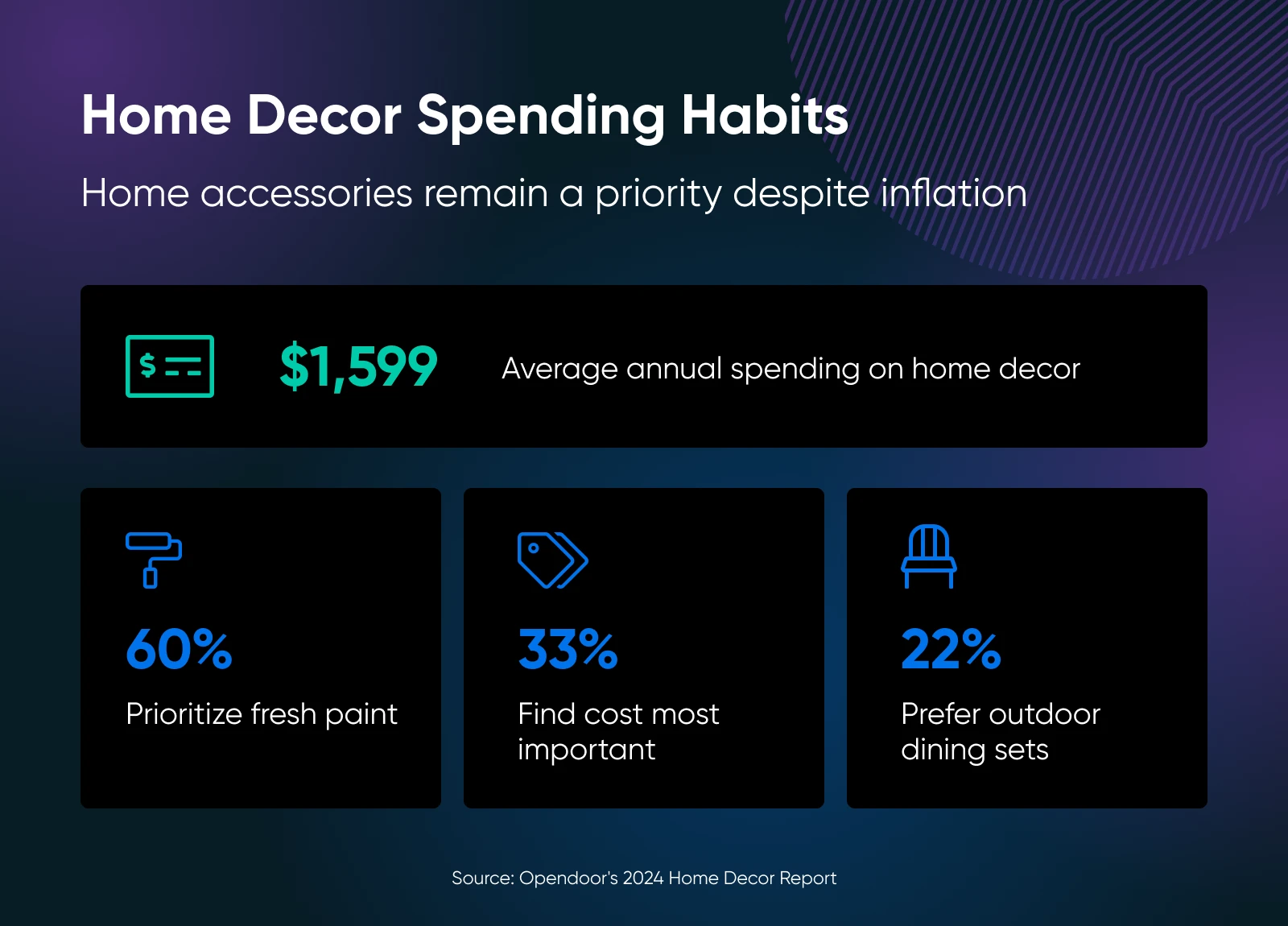
There’s plenty of room for businesses that offer clever solutions for home challenges or cater to distinct design tastes.
What You Can Do
- Sell storage solutions for tiny spaces: Offer modular shelving, under-bed organizers, over-the-door storage, or furniture with hidden compartments designed explicitly for small apartments or rooms.
- Curate items for a specific aesthetic: Focus entirely on one style, like minimalist Japandi, colorful maximalist, cozy dark academia, or sustainable/eco-friendly decor.
- Provide virtual organizing consultations: Help people tackle specific problem areas (closet, kitchen, home office) via video call, guiding them through decluttering and organizing.
- Design and sell unique organizational printables: Offer stylish downloadable checklists, labels, planners, or guides for home management or specific organizing projects.
6. Organic and Clean Beauty
Consumers genuinely want products without harsh chemicals and with ingredients they can pronounce.
The demand is real. Get this: the hashtag #cleanbeauty has 7.2 million tags on Instagram alone.
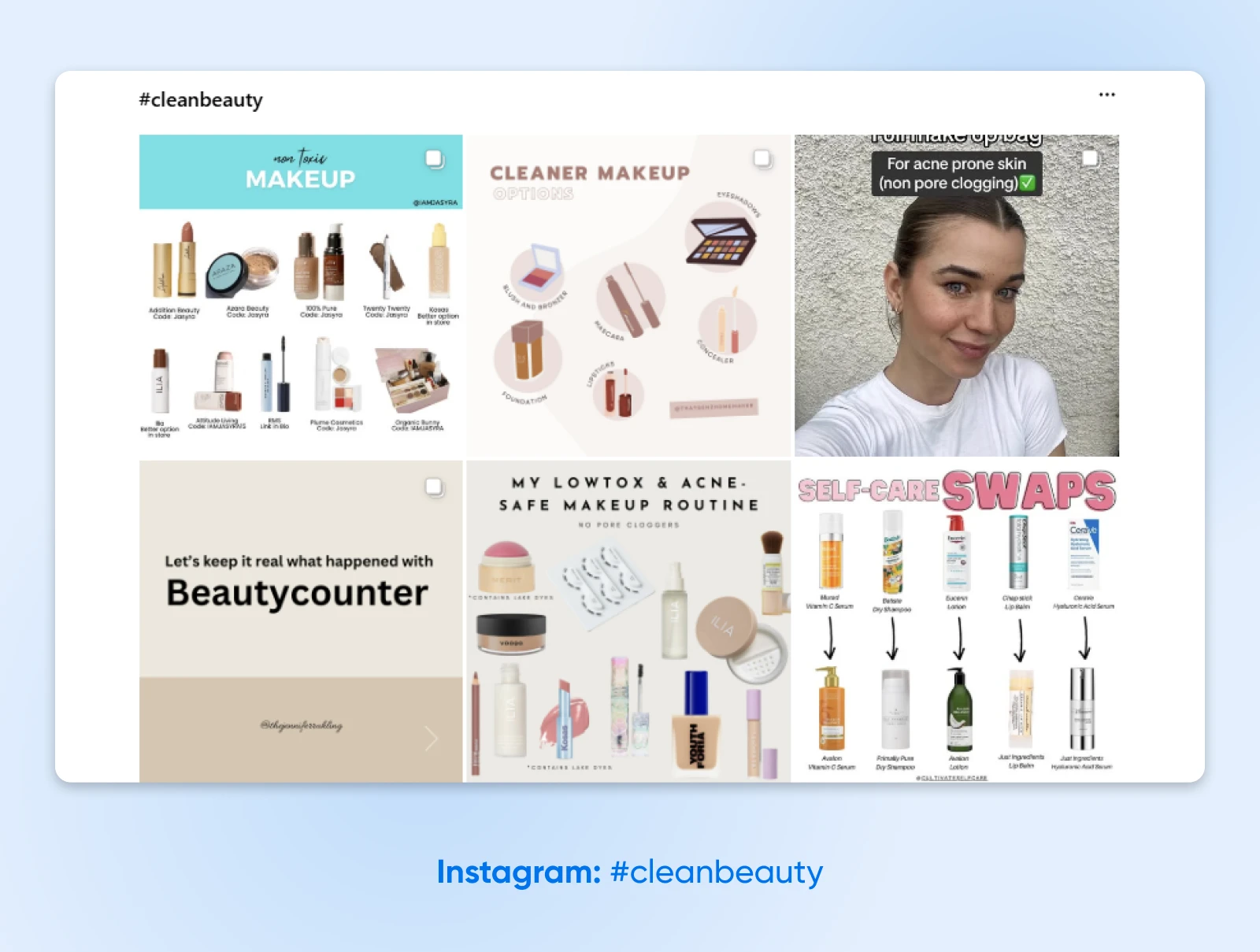
What You Can Do
- Create small-batch natural skincare: Make and sell products like organic face oils, gentle cleansers, or body butters using simple, high-quality ingredients (following all safety and labeling laws!).
- Curate clean beauty subscription boxes: Offer boxes featuring only vetted brands that meet strict “clean” criteria (free from certain chemicals, cruelty-free, etc.).
- Build an online shop specializing in one clean category: Focus only on certified organic makeup, reef-safe mineral sunscreens, or non-toxic haircare.
- Become a trusted resource: If you want to scratch your digital marketing itch, start a blog or social media account dedicated to decoding ingredient lists, reviewing clean products, and educating consumers.
7. Modern DIY and Hobby Kits
Our thumbs are getting sore from endless scrolling, and our eyes might actually fuse to our screens. So naturally, people are suddenly desperate to prove they can still use their actual hands for something other than typing or swiping.
Enter the modern DIY kit: making old-school stuff like knitting or pottery seem cool again.
In 2025 alone, the global arts and crafts market is expected to reach $48.33 billion.
Apparently, people will pay good money to make their own slightly lopsided mug or stitch a wonky sweater.
What You Can Do
- Package up trendy crafts: Box up everything someone needs to make that resin coaster, punch needle pillow, or tie-dye monstrosity they saw on TikTok. Easy instructions are key; assume your customer has the attention span of a goldfish.
- Offer “Look I Built This!” tech kits: Cater to the geek with beginner-friendly electronics kits. Build a basic radio that crackles, a robot that bumps into walls — whatever lets them brag they soldered something without burning the house down.
- Do crafty subscription boxes: Keep ’em hooked (and spending) by sending a surprise box of crafty stuff each month. Today, it’s pottery, and tomorrow… macrame plant hangers? The possibilities for questionable home decor are endless!
8. Hyper-Personalized Pet Supplies
People love their pets — maybe too much? They’re projected to spend over $25 billion on pet accessories alone globally in 2025, and that market’s growing nearly 8% a year.
The “pets are family” feeling means owners want specialized stuff, whether it’s food tailored to Fido’s weird allergy or a GPS tracker for Lola who loves flying off her leash.
What You Can Do
- Create personalized pet food or treat plans: Offer subscriptions based on breed, age, allergies, or specific health goals discussed with the owner.
- Sell breed-specific durable toys: Focus on toys designed to withstand the jaws of power-chewing breeds or interactive toys for brainy ones. Beagles love puzzles they can smell, for example.
- Offer high-tech pet monitoring: Provide reliable GPS tracking collars with good battery life or smart feeders that dispense measured portions.
- Commission custom pet portraits: Offer digital paintings or physical artwork based on photos submitted by owners for that ultimate personal touch.
Purr and Mutt’s been featured on CNN and BBC for turning all manner of pets, from cats to dogs to rabbits, into (adorable) works of art.
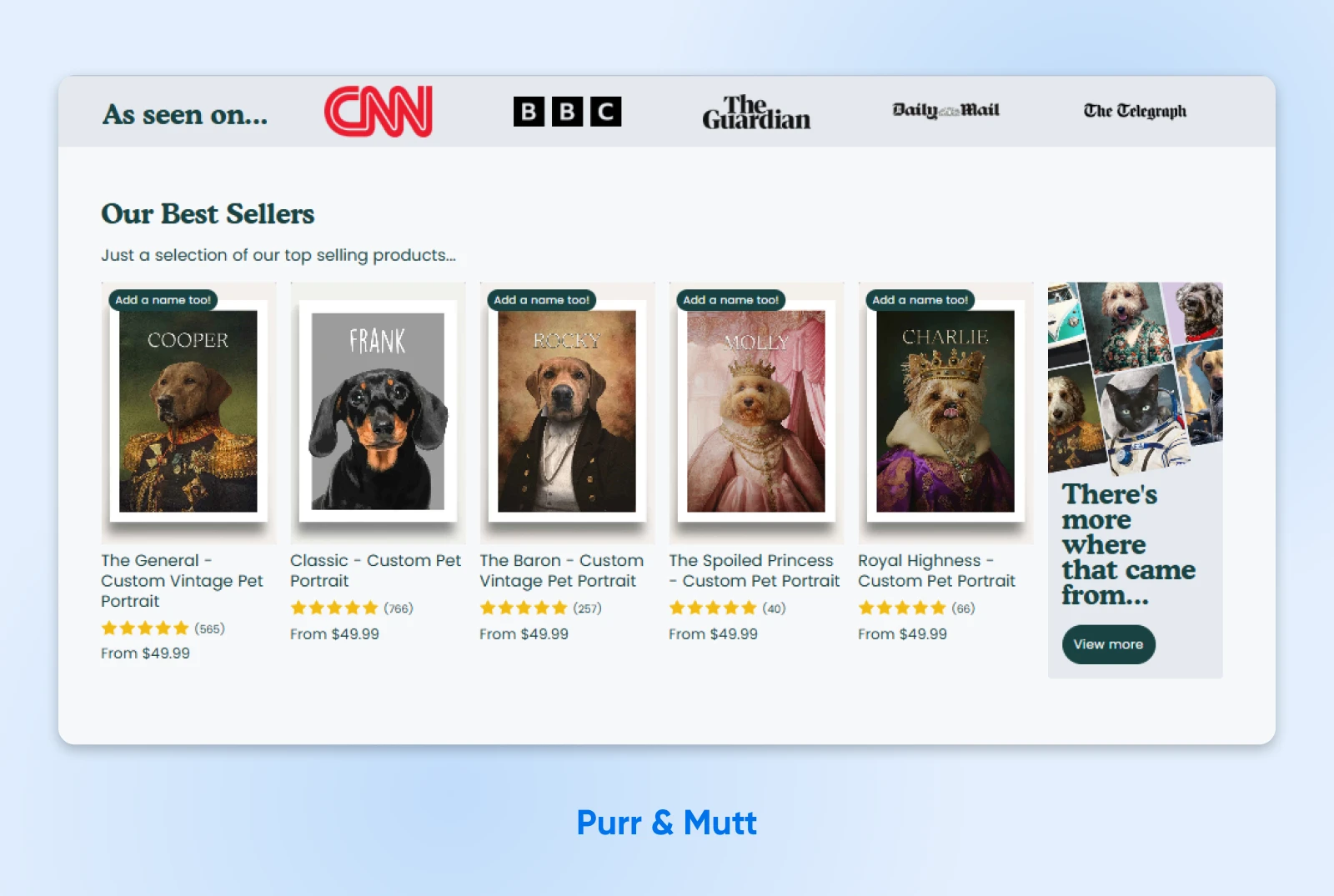
9. Niche AI Tools and Training (For Regular People)
AI is booming right now, but honestly? It’s confusing for most folks running a small business or working freelance. They need practical ways to use AI now without needing a PhD. That’s the gap you can fill.
Within the AI market, researchers at Sopra Steria identified four segments. Among the two largest categories are AI tools for processes (e.g., within process mining) and AI tools for people (e.g., intelligent AI assistants). Their predictions place these segments at a $390 billion market size by 2028.
There’s huge money in making AI useful, not scary.
What You Can Do
- Build AI tools for annoying processes: Focus on automating soul-crushing, repetitive tasks within specific jobs. For example, you might make a simple tool that helps Etsy sellers automatically categorize their expenses instead of crying over spreadsheets.
- Create AI assistants for overwhelmed people: Develop smart helpers tailored for specific professions. Maybe an AI assistant that helps therapists draft session notes (ethically!), or one that suggests email replies for busy freelancers who seem allergic to their inbox.
- Teach people how AI can help them: Run workshops or courses for specific groups (like realtors, artists, or plumbers), showing them practical ways AI can help their process or act as their assistant without stealing their jobs (probably). Focus on using existing tools smarter.
- Consult on setting up AI without breaking things: Help small businesses implement simple AI for their processes or people, like chatbots that handle basic customer questions without annoying everyone.
10. Repair Education and Kits (Anti-Throwaway Culture)
Sick of your phone conveniently slowing down right after the warranty expires? Or that fancy gadget becoming an expensive paperweight because one tiny, irreplaceable part broke?
Yeah, you and everyone else.
Globally, we churn out tens of millions of metric tonnes of e-waste every single year. Meanwhile, surveys consistently show that a huge majority of consumers want the right to repair their own gear and are ticked off by products designed to be disposable bricks. The whole “Right to Repair” movement is gaining real steam for a reason.
This widespread frustration creates a solid opportunity to arm people with the skills, tools, and confidence to fight back against planned obsolescence.
What You Can Do
- Sell DIY repair kits: Bundle the specific, often weirdly tiny tools (like spudgers, prying tools, and special screwdrivers) and quality replacement parts needed for popular repairs. Take the guesswork and risk out of sourcing sketchy components from random online sellers.
- Build a repair community/forum: Launch an online space (maybe with a paid tier) where people can share their repair guides, ask questions when they get stuck, and troubleshoot tricky fixes together.
- Offer refurbished gadgets (with honesty): Source used electronics, fix them up properly using good parts, and sell them. Be transparent about what you repaired and why, including links to guides showing how the buyer could fix it again if needed. Focus on reliability and fighting the disposable cycle.
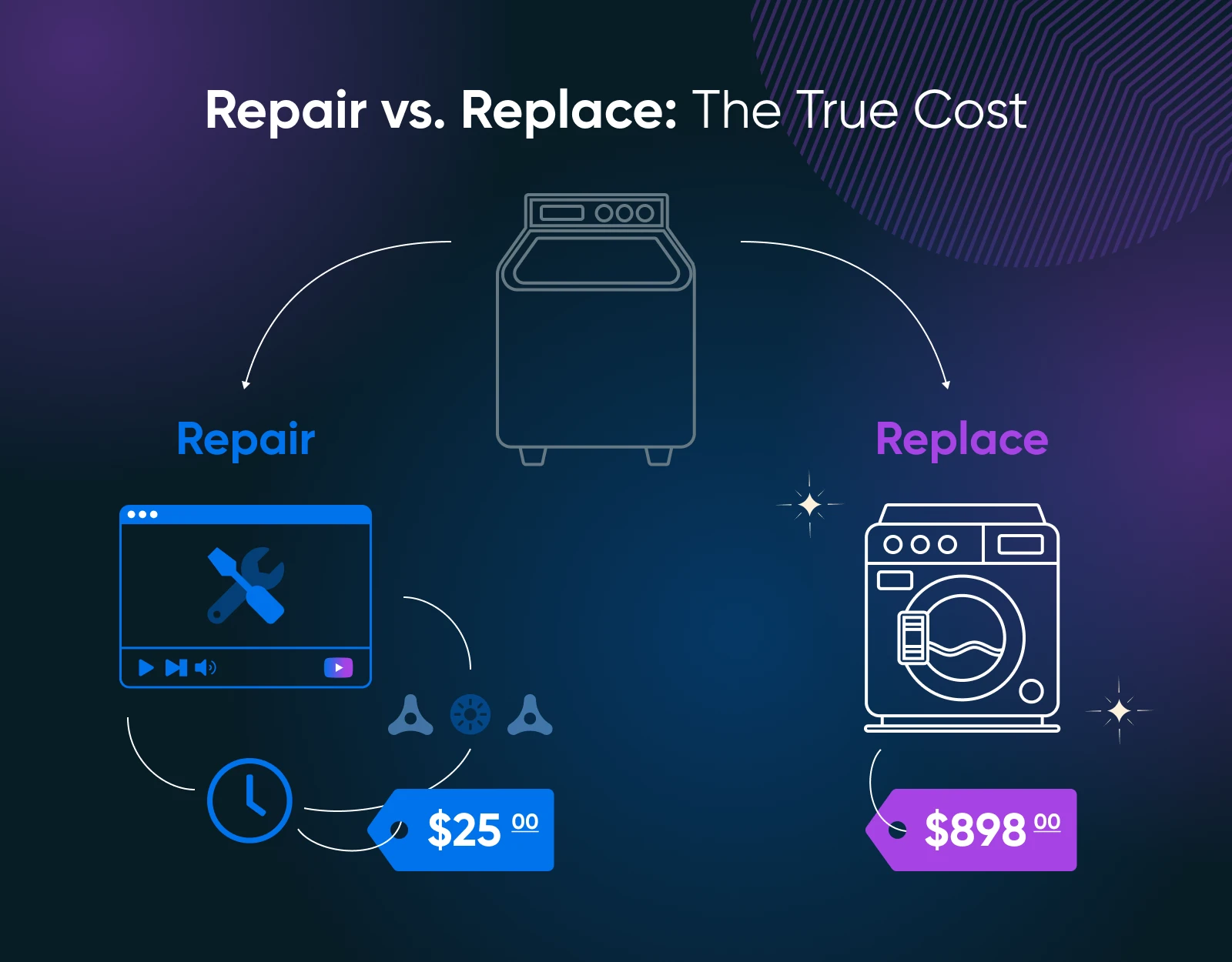
Alright, What Now? Start a Business!
Got your niche picked (and maybe even validated)? Awesome! Time to launch this sucker. Here’s a quick checklist:
1. Seriously, validate
Okay, one last nudge. Validate that top-scoring idea from your matrix if you haven’t yet. Talk to potential customers, run a quick online survey, and maybe set up a dead-simple “coming soon” page to collect emails for future email marketing.
2. Sketch a “plan”
You don’t need a 50-page formal business plan destined to gather dust, but do jot down the basics derived from your evaluation:
- Who’s your ideal customer?
- What’s your unique selling point?
- Roughly how much will things cost?
- What’s your pricing strategy?
- How will people find you online?
Think bullet points or a simple mind map, not a novel.
3. Nail down your actual offer
Time to get concrete about what you’re putting out there. If it’s a physical product, figure out manufacturing or sourcing. Where are you getting it, how’s the quality, and how will you handle shipping?
If it’s a service, define exactly what’s included (and what’s not) so you don’t end up scope-creeping yourself into working 24/7 for peanuts. Logistics, baby.
4. Build your online hub
Seriously, you need a website. It’s not optional in 2025.
This is your corner of the internet to tell your unique story, collect email addresses, and give people a reliable place to buy from you.
💡Pro tip: If you’re building on WordPress, the Astra theme is a solid bet. It’s known for being lightning fast (remember, visitors bail on slow sites), lightweight, and incredibly customizable, even if you’re allergic to code. Plus, it works well with most other tools you might add later.
5. Show up where your people are
Don’t just spray posts randomly across every social platform. Figure out which one or two places your ideal customers hang out and engage.
Then, show up there regularly. Share stuff they’ll find useful, interesting, or entertaining related to your niche — build a connection. Don’t just scream “BUY MY STUFF!” constantly.
6. Launch, listen, learn, repeat
Hit the button! Get your product or service out there.
Spoiler: It will not be perfect. And that’s completely okay.
The real work starts now. Pay super close attention to what happens next. What questions do people ask constantly? What feedback (good, bad, and weird) do you get? What’s selling?
Utilize all that real-world data to fix what’s broken, improve what’s working, and refine your approach.
Your Move, Entrepreneur
If you zoned out, here’s the super-quick version:
- The internet’s buzzing with opportunity, but you need a niche to get noticed. Don’t try to sell everything to everyone.
- Use that evaluation matrix we gave you to check if your idea sucks or shines.
- Seriously, validate your top idea before you dump your savings into it. Test it out on real people first.
Next step? Build it, market it, and make some cash.
Getting your website up, making sure Google shows it to people (that’s SEO!), and telling the world about your awesome thing takes effort.
DreamHost can hook you up with professional website services, plus SEO and marketing tools, cutting down the tech headaches so you can focus on being a forward-thinking small business owner.

Shared Hosting
Web Hosting That Powers Your Purpose
We make sure your website is fast, secure and always up so your visitors trust you.
Choose Your Plan
This page contains affiliate links. This means we may earn a commission if you purchase services through our link without any extra cost to you.



